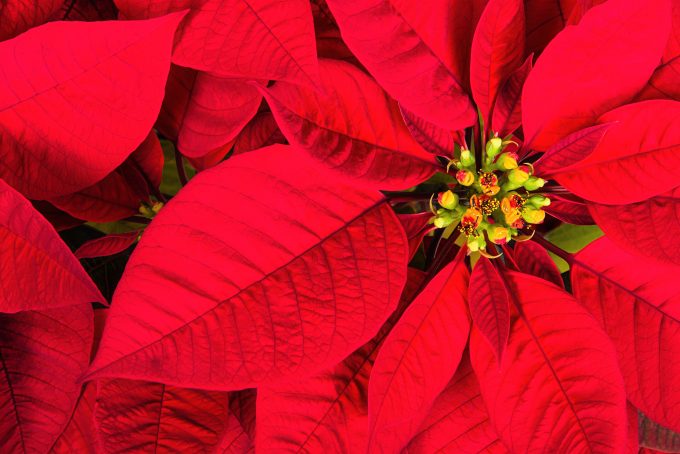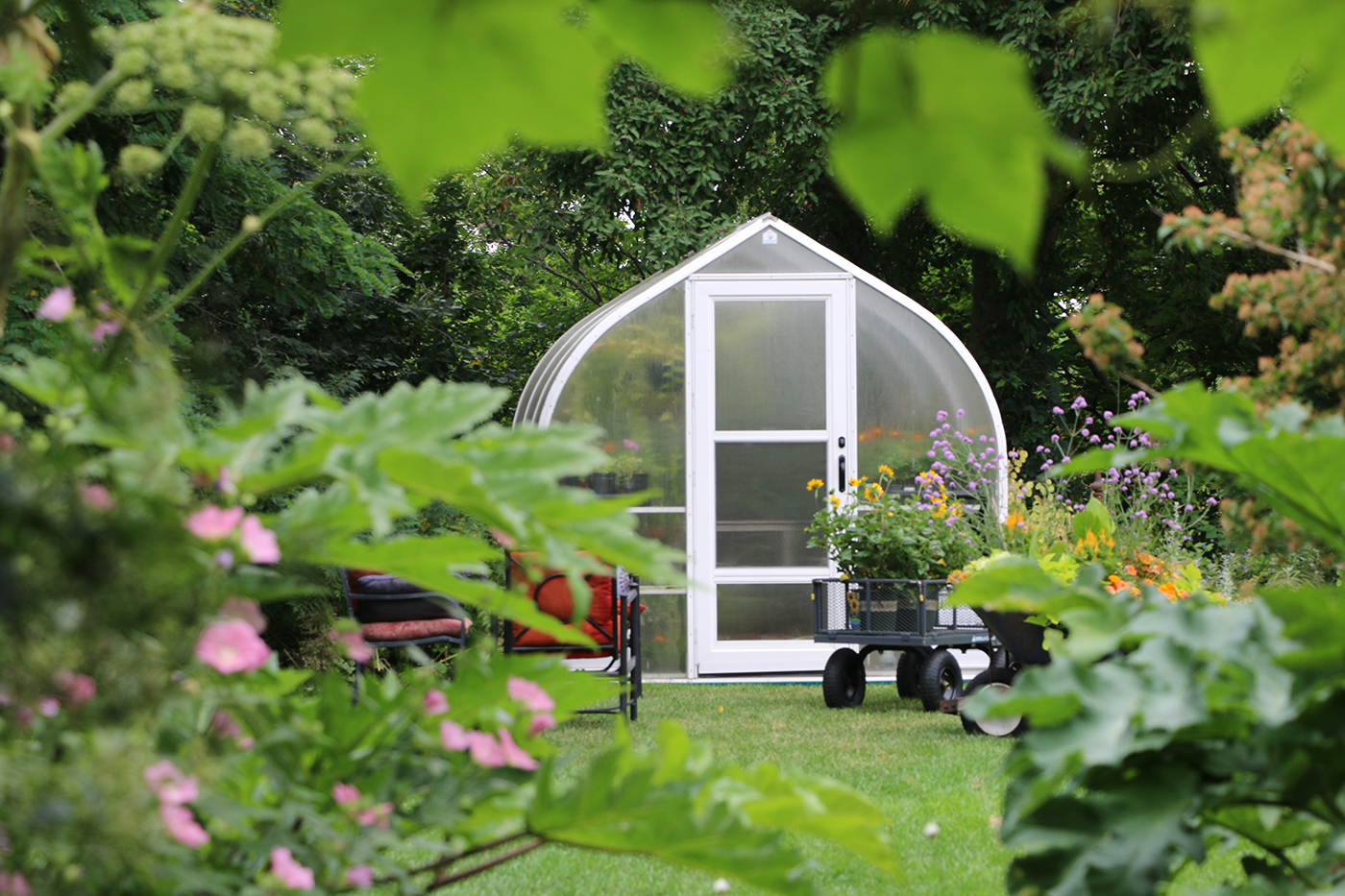It’s interesting how just a quick glance at certain plants brings to mind a particular time or place. Many of the plants we associate with the holidays do that for me, and no doubt for a lot of other folks, too.
Let’s take a look at some very basic do’s and don’ts on how to keep these special plants healthy so they can be their best during the coming months.
Starting with poinsettias, of course
Tagawa Gardens is bringing in around 3500 of these beautiful iconic plants for the holiday season in nearly 20 varieties. For many people, poinsettias are a family tradition.
For the record, poinsettias are not poisonous, but they’re certainly likely to give small children or pets a nasty stomach ache if they manage to eat several leaves. Just another reminder that all houseplants should be kept out of the reach of curious hands and paws.
How to keep your poinsettia happy
Poinsettias are native to the tropical rainforests of southern Mexico. That tells us that these striking plants don’t like it dry or cold.
To keep poinsettias healthy in our Colorado homes, make sure their soil is never allowed to go dry. Check your poinsettia daily and water it thoroughly whenever the top of the soil is dry to the touch. Plants that are allowed to wilt will never fully recover.
And don’t let poinsettias sit it standing water in a foil wrapper, a pot, or saucer. They need to drain freely after each watering.
Poinsettias will look their best in bright, indirect light. They should be displayed away from the drying heat of a furnace vent of the fireplace. They can also go into shock if they’re exposed to cold air from the opening and closing of nearby doors or even just on the trip from the garden center to your car.
At Tagawa’s, we always wrap our poinsettias when they’re purchased. Once you’re home, avoid breaking any of the brittle stems by tearing the wrapping away rather than lifting the plant out of its paper sleeve.
Amazing amaryllis
If you like your holiday plants dazzling and easy… an amaryllis is for you!
These showy trumpet-shaped flowers emerge from big bulbs. In fact, the bigger the bulb, the bigger the flowers it will produce.
Long after my grandfather had to give up gardening, I’d send him an amaryllis bulb every Christmas. It took up a place of honor right next to his easy chair. I can still hear it: “Honey, I can sit here and watch that thing grow!” See what I mean about plants and memories?
Tagawa’s sells amaryllis bulbs individually or as part of a kit. You may be surprised to learn that these big beefy bulbs don’t want to be in a big pot.
They prefer a container an inch, or at most two inches larger than the bulb itself. Only two-thirds of the bulb should be down in the soil, with fully one-third exposed so water won’t collect around the neck of the bulb and cause rot. Be sure to use a container with good drainage.
Water the bulb when it’s planted then set it in a warm bright room. Once the new growth to emerges, begin regular watering until you see water coming out the bottom of the pot. Never let the plant sit in standing water.
Set the growing plant to a sunny location. Quite often, the flower will come before the leaves. Once the buds begin to open, move the plant out of any direct sun to prolong the blossoms.
While in bloom, an amaryllis should be displayed away from direct exposure to hot or cold air like heat vents or drafty doorways. Room temperatures in the mid-60’s will be ideal.
Be sure to pay close attention and your plant is coming to life… and see if you can see it grow, too, just like my grandfather.
Christmas cactus
I’ve always loved Christmas cactus. The blossoms look so exotic… almost other-worldly.
These plants are native to the coastal mountains of southeastern Brazil, so it’s no surprise that they don’t like the hot dry conditions of their dessert cousins.
For good flowering, Christmas cactus (a.k.a. Thanksgiving cactus or Easter cactus, depending on when they happen to bloom) does best in bright but not direct sun. And when flowers are present, slightly softer light will help them last longer.
Christmas cacti have very fine roots that will begin to rot in a heartbeat unless they’re kept in surprisingly small, well-draining pots. Water them thoroughly then allow the soil to dry out a bit before the next big drink. Never let the plants sit in standing water.
A word about the buds…
I’m speaking from experience here: do not expose a budding or flowering Christmas cactus cold air!
I did that once… carried a beautiful flowering plant to my car on a cold night. The next day, every single flower and bud fell off. The cactus itself was okay, but bye-bye pretty blossoms!
And for something green and foresty…
(Forgive me. “Foresty” probably isn’t a word, but it just fits…)
Norfolk pines aren’t dramatic like the plants discussed above. They don’t flower, and they come in just one basic color: green. But they’re invitingly soft and sweet and deserve a spot in our indoor winter landscape.
Norfolk Island pines are native to an island off the coast of Australia. They’re not true pines, but the simple beauty of their architecture can’t help but bring the feeling of the outdoors in, especially in pine-rich places like Colorado.
The main challenge of growing Norfolks as an indoor plant in Colorado is our dry air, especially in the winter when forced-air heating is often a constant. Air that’s too dry can cause the needles on Norfolks to turn brown.
Grouping indoor plants together can help create a bit of a humidity bubble. Setting Norfolks on a pebble tray filled with water just below the bottom of the pots can help, too.
Norfolk pines need at least two hours of bright, indirect sun to maintain their bright color. To keep the plants looking their best after the holidays, remember to give them a one-quarter turn every few days so the overall growth is symmetrical.
Water your Norfolks thoroughly every time the top inch of soil is dry to the touch, making sure you see the water drain through the holes at the bottom of the pot. Never let these plants sit in standing water.
These trees are slow growers, but with some T.L.C., Norfolk pines living indoors can reach ten feet tall or more, eventually giving just a bit of a “foresty” feel to your own home!











